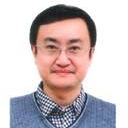Advanced Flexible Forming Technologies
A special issue of Metals (ISSN 2075-4701). This special issue belongs to the section "Metal Casting, Forming and Heat Treatment".
Deadline for manuscript submissions: closed (31 October 2022) | Viewed by 8378
Special Issue Editors
Interests: sheet metal forming; composite materials; ductile fracture
Special Issues, Collections and Topics in MDPI journals
2. School of Mechanical Engineering and Automation, Beihang University, Beijing 100191, China
Interests: plasticity theory; fracture mechanics; metal forming; structural mechanics
Special Issues, Collections and Topics in MDPI journals
Special Issue Information
Dear colleagues,
Lightweight materials have the characteristics of low density and weight reduction, including titanium alloys, aluminum alloys, superalloys, copper alloys, composite materials and multi-materials structure composites, as well as plastic materials. Lightweight materials are widely used in advanced industries such as in the fields of aeronautics and astronautics. The development and application of lightweight materials has also put forward higher requirements for advanced forming technologies. Advanced flexible forming technologies refer to the forming technologies with few molds or without changing molds such as incremental forming, spinning, powder metallurgy and diffusion bonding. Especially for the parts made out of lightweight materials with many types and small quantities, the advanced flexible forming technologies have obvious advantages. Advanced flexible forming technologies also include the forming technologies with flexible media like gas, liquid, soft materials and solid particles, such as hot isostatic pressing, hydro-forming, rubber bladder forming, etc. Moreover, these technologies often use high temperature/high pressure to achieve good forming results. Nowadays, advanced flexible forming technologies have become important forming methods in the fields of aeronautics and astronautics, which also play an important role in the design and application of lightweight materials. This Special Issue aims to address the latest research related to advanced flexible forming technologies using high pressure/high temperature based on lightweight materials including titanium alloys, aluminum alloys, superalloys, copper alloys, composite materials and multi-materials structure composites, as well as plastic materials. Finally, the forming technologies are listed as follows:
- Hot isostatic pressing, hot pressing, powder metallurgy and other advanced high pressure/high temperature forming technologies;
- Hydro-forming and other fluid media-forming technologies;
- Diffusion bonding and other advanced joining technologies;
- Forming technologies of composite materials and multi-materials structure composites;
- Other advanced flexible forming technologies like incremental forming, spinning, rubber bladder forming, creep age forming, shot peening, extremely low temperature forming, high-speed forming including electric magnetic forming, electric hydro forming and explosive forming;
- Some other innovative forming technologies.
High-quality research articles are encouraged and welcome to be submitted to this Special Issue.
Prof. Dr. Lihui Lang
Prof. Dr. Sergei Alexandrov
Guest Editors
Manuscript Submission Information
Manuscripts should be submitted online at www.mdpi.com by registering and logging in to this website. Once you are registered, click here to go to the submission form. Manuscripts can be submitted until the deadline. All submissions that pass pre-check are peer-reviewed. Accepted papers will be published continuously in the journal (as soon as accepted) and will be listed together on the special issue website. Research articles, review articles as well as short communications are invited. For planned papers, a title and short abstract (about 100 words) can be sent to the Editorial Office for announcement on this website.
Submitted manuscripts should not have been published previously, nor be under consideration for publication elsewhere (except conference proceedings papers). All manuscripts are thoroughly refereed through a single-blind peer-review process. A guide for authors and other relevant information for submission of manuscripts is available on the Instructions for Authors page. Metals is an international peer-reviewed open access monthly journal published by MDPI.
Please visit the Instructions for Authors page before submitting a manuscript. The Article Processing Charge (APC) for publication in this open access journal is 2600 CHF (Swiss Francs). Submitted papers should be well formatted and use good English. Authors may use MDPI's English editing service prior to publication or during author revisions.
Keywords
- Lightweight materials
- Composite materials
- Multi-materials structure composites
- Advanced flexible forming technologies
- High pressure
- High temperature
- Forming technologies with flexible media
- Hot isostatic pressing
- Hydro-forming
- Diffusion bonding






